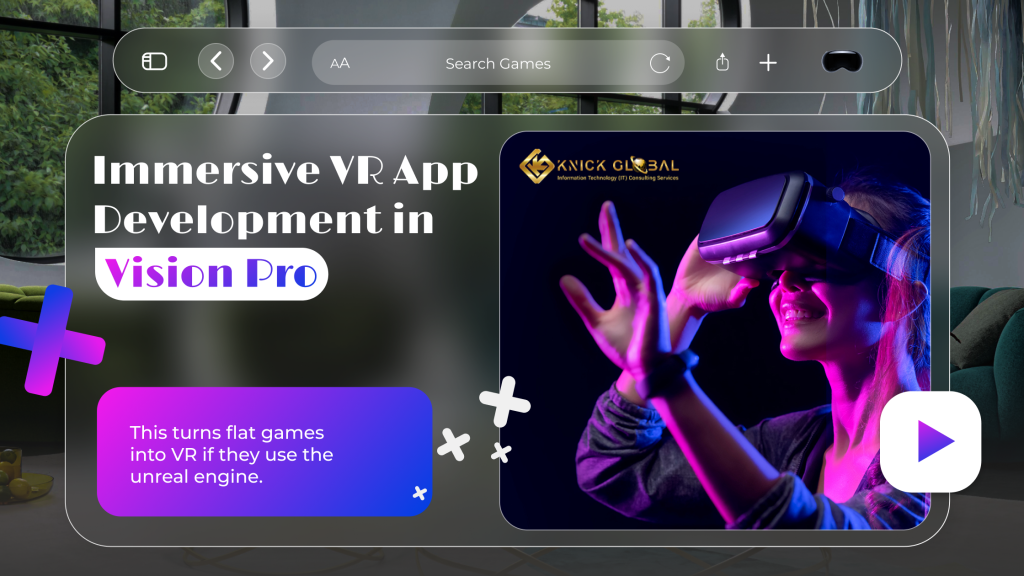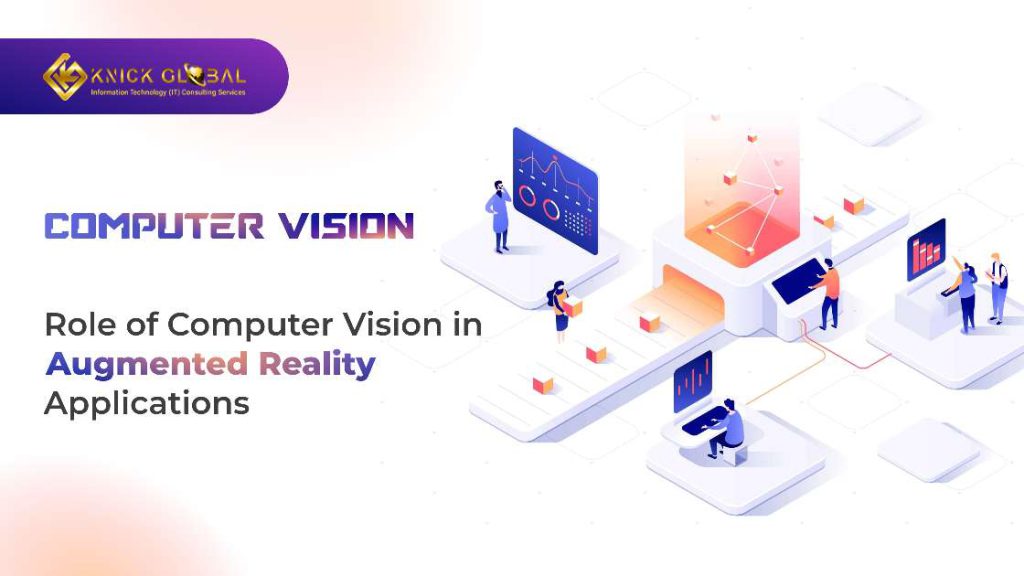Immersive VR Application Development in Vision Pro
Virtual Reality (VR) has revolutionized the way we experience digital content, offering immersive and interactive environments that engage users like never before. From gaming and education to healthcare and beyond, VR technology is transforming various industries. Among the cutting-edge tools available to developers, Vision Pro stands out as a powerful platform for creating stunning VR experiences. In this blog, we will explore the world of immersive VR application development using Vision Pro, highlighting its unique features, development process, and prospects. Whether you’re a developer looking to dive into VR game development or a business seeking top-notch VR game development services, this guide will provide valuable insights. Let’s embark on this journey into the fascinating realm of Vision Pro and VR. The Rise of Immersive VR Experiences Historical Context and Evolution The concept of VR isn’t new, but it has come a long way since its inception. The journey began with rudimentary attempts at creating immersive environments, evolving through decades of research and technological advancements. Early VR systems were cumbersome and limited in functionality, but they laid the groundwork for the sophisticated systems we have today. As technology advanced, so did the capabilities of VR. The introduction of more powerful processors, high-resolution displays, and sophisticated motion tracking systems has enabled the creation of more realistic and engaging VR experiences. Today, we have reached a point where VR can simulate real-world environments with stunning accuracy, making it an invaluable tool in fields ranging from gaming to medical training. Current Market Trends and Opportunities The VR industry has seen exponential growth in recent years, with a significant increase in both consumer and enterprise applications. According to market analysts, the global VR market is expected to reach billions of dollars in the coming years, driven by advancements in technology and growing consumer interest. The demand for immersive experiences is particularly strong in the gaming industry, where players seek more engaging and interactive gameplay. VR game development has become a thriving sector, with a plethora of VR game development companies offering specialized services. Beyond gaming, VR is also making waves in education, healthcare, and real estate, providing immersive learning, training, and visualization solutions. The opportunities in the VR space are vast and varied. Businesses and developers can tap into this growing market by creating innovative VR applications that cater to diverse needs. Whether it’s developing immersive games, educational content, or therapeutic applications, the potential is immense. Vision Pro: A Game-Changer in VR Development Key Features of Vision Pro Vision Pro is a state-of-the-art VR development platform that offers a range of features designed to empower developers and enhance user experiences. One of the standout features of Vision Pro is its high-resolution displays, which deliver crisp and clear visuals. This is crucial for creating immersive environments where users can feel truly present. In addition to superior visual quality, Vision Pro also boasts advanced tracking and interaction capabilities. It supports a wide range of input methods, including hand tracking, motion controllers, and eye tracking, allowing for more natural and intuitive interactions. This versatility makes it an ideal platform for developing diverse VR applications, from games to training simulations. Another notable feature of Vision Pro is its integration with other cutting-edge technologies such as artificial intelligence (AI) and augmented reality (AR). This allows developers to create more dynamic and interactive experiences, blending the virtual and real worlds in innovative ways. Benefits of Using Vision Pro for Developers For developers, Vision Pro offers a host of benefits that streamline the development process and enhance creativity. The platform provides a comprehensive set of development tools and resources, including an easy-to-use SDK, extensive documentation, and a supportive community. This makes it accessible to both seasoned developers and newcomers to VR game development. One of the key advantages of Vision Pro is its flexibility. The platform is compatible with a wide range of hardware, from high-end VR headsets to more affordable options, making it possible to reach a broad audience. This scalability is particularly beneficial for a VR game development company looking to create games that can be enjoyed by as many people as possible. Moreover, Vision Pro’s robust performance ensures that applications run smoothly and efficiently, providing users with a seamless and immersive experience. This is critical in VR, where any lag or glitch can break the sense of immersion. Developing Immersive VR Applications with Vision Pro Understanding the Development Environment The first step in developing VR applications with Vision Pro is setting up the development environment. Vision Pro offers a user-friendly SDK that includes all the necessary tools and libraries for creating VR content. The SDK is compatible with popular programming languages and frameworks, such as C#, Unity, and Unreal Engine, making it accessible to a wide range of developers. Once the development environment is set up, developers can begin designing their VR applications. This involves creating 3D models, animations, and textures, as well as programming the interactions and logic that will bring the virtual world to life. Vision Pro provides a range of tools and resources to assist with this process, including asset libraries, tutorials, and sample projects. Designing for Immersion Creating an immersive VR experience involves more than just impressive graphics. It requires careful consideration of various factors, including spatial audio, realistic visuals, and interactive elements. Spatial audio, for example, is essential for creating a sense of presence and enhancing the realism of the virtual environment. By simulating the way sound travels in the real world, spatial audio can help users feel more immersed in the VR experience. Visuals are also a crucial component of immersion. High-quality textures, realistic lighting, and detailed 3D models can make a virtual environment feel more real and engaging. However, it’s important to strike a balance between visual quality and performance, as overly complex graphics can strain the system and lead to lag or other issues. Interactivity is another key element of immersive VR. Allowing users to interact with the environment and objects in natural and intuitive ways can greatly enhance the










